When to Plant – Get Your Crops in the Ground at the Right Time
I think it’s one of the most confusing topics for beginning gardeners. “When should I plant?” Maybe you’ve found yourself asking the same question. You’ve done enough research to know not all plants go in the ground at the same time, but your mind spins, trying to remember it all.
You hear the talk about zones and frost dates (is there’s a difference? YES!), and maybe you’ve even followed some bad advice and the results in your garden showed it.
In this episode of the Beginner’s Garden Podcast and the blog post below, I go over the basics — what you need to know to help you plant the most common crops in the home garden at the right time. Not only will you get general guidelines, but we also talk about something I have never heard anyone suggest when it comes to warm season crops.
*Note: this post and podcast specifically addresses when to plant spring crops. For guidance on knowing when to plant your fall or winter crops, see this post: How to Plant a Fall Garden: A Beginner’s Guide.
Click to listen to the episode, and scroll down to read the highlights below.
Links below may contain affiliate links, which means if you click through and make a purchase, I’ll receive a commission at no extra cost to you. Thank you for your support!
When to Plant What
What You Need to Know First:
I started my first garden in 2013. Over the years, I’ve obtained a pretty firm handle on when all of my plants need to go in the ground. I no longer have to consult planting guides. I just know.
But, it hasn’t always been that way. I remember as a first-year gardener, making copious notes, trying to keep everything straight.
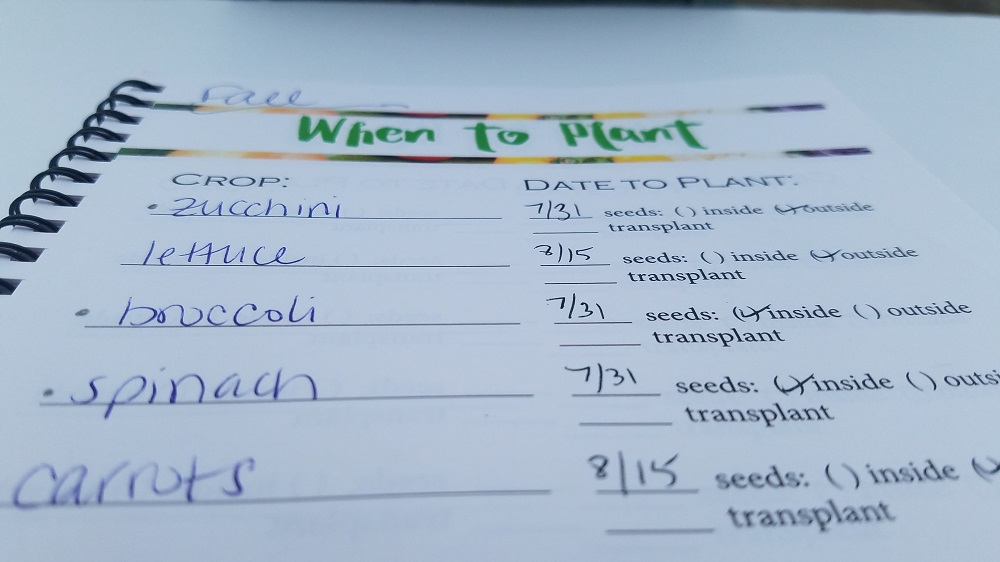
And if keeping track of all these crops doesn’t make your head spin enough, there’s something else that completely threw me off — all those well-intentioned “when to plant” grids you see online or on Pinterest. What I learned the hard way was that garden zones and growing seasons are not the same.
You have to time your plantings according to your last and first frost dates — NOT your zone. As I explain here, zones tell you what to plant, not when.
Instead, you need to know your average last spring frost date (and your average first frost date for fall plantings).
Click here to calculate your average last spring frost by zip code
Now, once you know your average last and first frost dates, you can then start planning your crops.
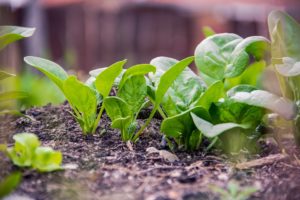
Cool Season Crops:
First, let’s talk about cool season plants. These are crops that either CAN take a frost or even a light freeze OR they absolutely cannot tolerate hot weather, or both.
Here I’m listing the most common cool-season crops and when the seeds and/or transplants can be planted. These dates are based on my experience and other sources I’ve consulted, but as you get experience in your garden, you can experiment with different planting times.
- Spinach –
- Seeds: 6 weeks before average last frost or as soon as ground can be worked.
- Transplants: 4 weeks before average last frost
- Lettuce –
- Seeds: 4 weeks before average last frost
- Transplants: 2 weeks before average last frost
- Onions –
- Seeds: 12 weeks before average last frost
- Transplants: 4 weeks before average last frost
- Potatoes – 6 weeks before average last frost
- (If your hot summers come late or you have mild summers, you can plant later than this, but in my Zone 7b Arkansas garden, I have the best outcome when I plant early since potatoes don’t care for extremely hot weather.)
- Carrots – 6 weeks before average last frost
- Peas – 4 weeks before average last frost
*Lettuce, Potatoes, Carrots, and Peas can also be planted up until around the average last spring frost, depending on how hot your summers are.
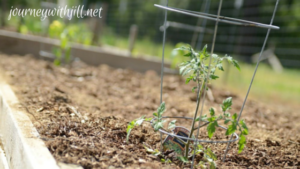
Warm Season Crops:
Next, let’s talk about warm season plants. These are ones that cannot tolerate a frost at all, and they’re the ones you need to wait until the danger of frost has passed.
But before we get into the dates, one thing I learned in the 2018 season is the “average” first frost date is just an average. So keep an eye on your weather very carefully. My last frost in 2018 occurred three weeks after the average! Thankfully, I kept an eye on the ten-day forecast and if I saw any low temperatures below 45, I waited.
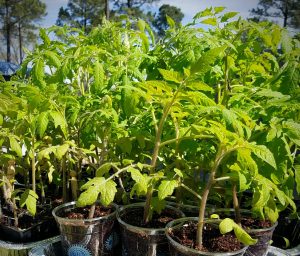
This brings me to my next point. Even if you’ve experienced your last frost, that doesn’t mean your warm season crops are ready to go in the ground. To borrow a phrase from the apostle Paul in the Bible, even if it’s permissible, that doesn’t mean it’s beneficial (See 1 Corinthians 10).
Using the example, if you plant your warm season crops in the ground before the last frost has passed, it will die, so you want to wait until after that time. But let’s say my last frost date has passed. It is permissible for me to plant my warm season crops, but is it beneficial? In my experience, not always.
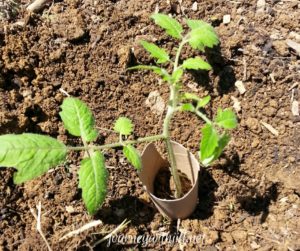
Let’s look at some common examples. Tomatoes don’t begin thriving until nighttime temperatures stay well into the 50s. They’ll sit in the ground, languishing. And squash seeds won’t germinate until the soil temperature is closer to 70 at the minimum.
Therefore, you need to look at your forecast lows and also your soil temperature. Each season will be a little different, so don’t just look at the “permissible” date on the calendar. Look at what is beneficial for the plant.
How do you do this?
Asking the following questions will give you a good idea whether it’s beneficial to plant your seeds or transplants outside.
Questions to Ask Before Planting Warm Season Crops:
- When is the weather right for that plant to flourish?
- Are the lows stable in the safe range?
- Has the soil temperature warmed enough? (I recommend a soil thermometer)
- Has the ground dried out enough where you’re not planting in mud?
- Have weeds started to sprout? (In my experience, where weeds don’t grow, seeds won’t sprout. Wait til you see weeds popping up.)
Keeping these considerations in mind, here are my general suggestions on when to plant your warm season crops. As mentioned earlier, as you get experience in your garden, you can experiment with different planting times. Just keep in mind that a frost will kill these tender plants.
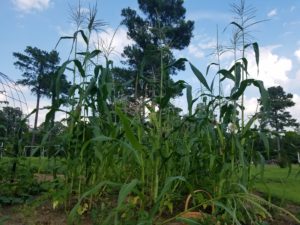
Warm Season Crops
- Corn & Beans (Seeds) – as soon as last frost date as passed, with soil temperature of 65 degrees
- Tomatoes (transplants) and Squash, Zucchini, Cucumber, & Melon Seeds: 2 weeks after last frost
- Peppers (transplants) and Okra (seeds or transplants): 1 month after last frost has passed
Links Referenced in the Podcast Episode:
–
Knowing when to plant may seem overwhelming, but using these guidelines you should be able to get off to a great start!
Seed Starting Quick Reference Guide
Which seeds should you start indoors? Which should you wait to plant directly in the garden? When? And in what soil temperatures do certain seeds germinate better? Grab this one-page quick reference guide to get your seeds sprouting and your plants growing strong!
Plus, I'll send you my "In the Garden E-mail" on Fridays, periodic updates on garden resources relevant to you, and get access to my entire bank of free garden downloads!
You are also agreeing to our privacy policy.

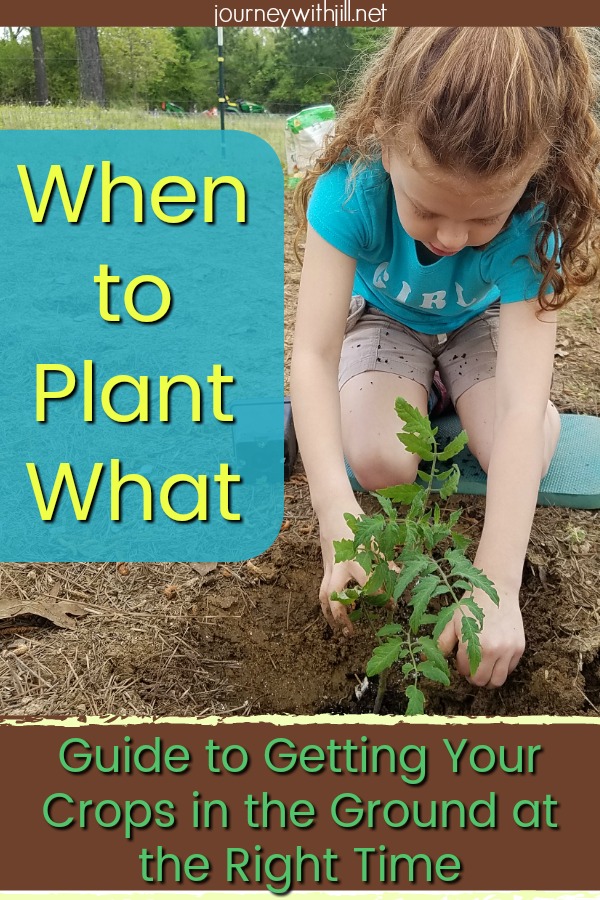
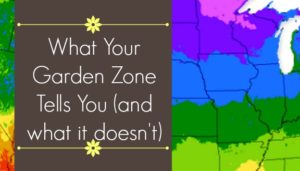
thanks for this .. as i have a tendency to transplant too early .. rob in halifax , nova scotia
When you say “last frost” in regards to tomatoes and peppers, do you mean the average last frost date?
When you’re planning, yes, you would plan for your average last frost date. But when you’re actually planting, you want it to be after that last frost has actually passed, as far as you can tell. Around that average last frost date, I’m always looking at the 10-day forecast to see if I predict I’m safe to plant.